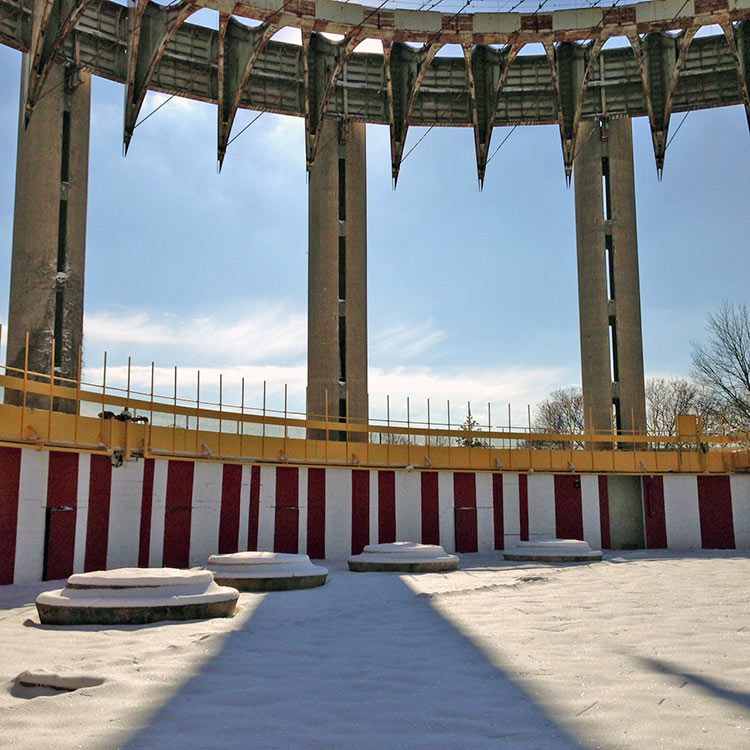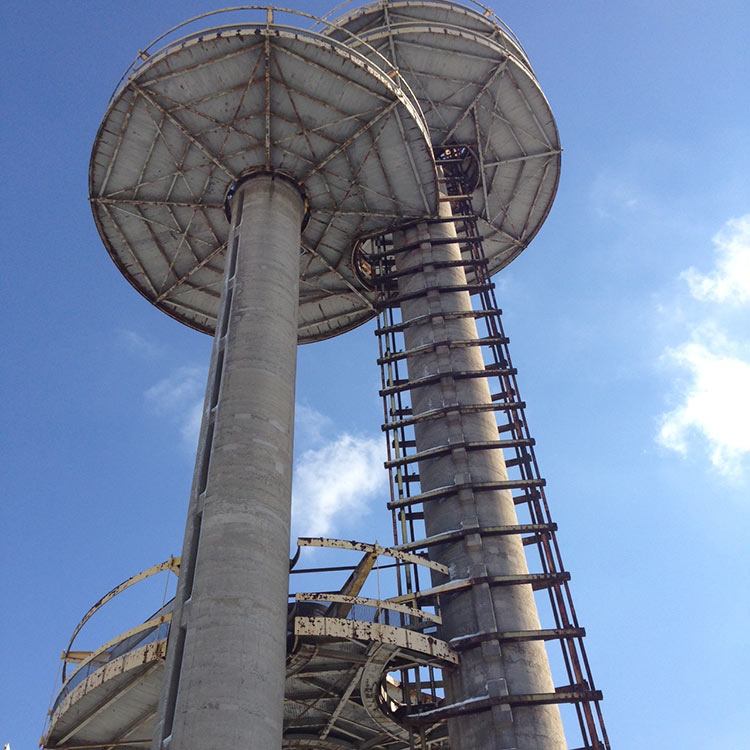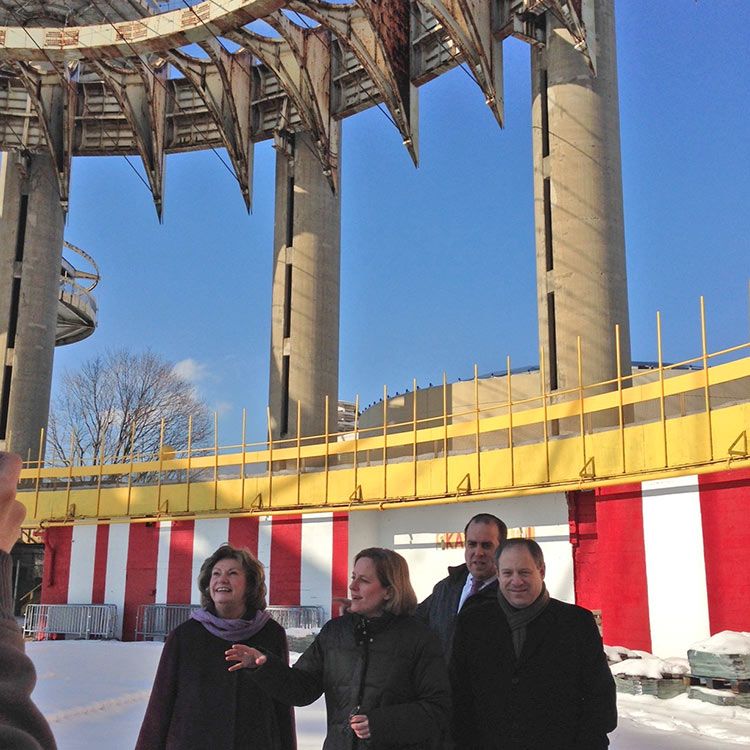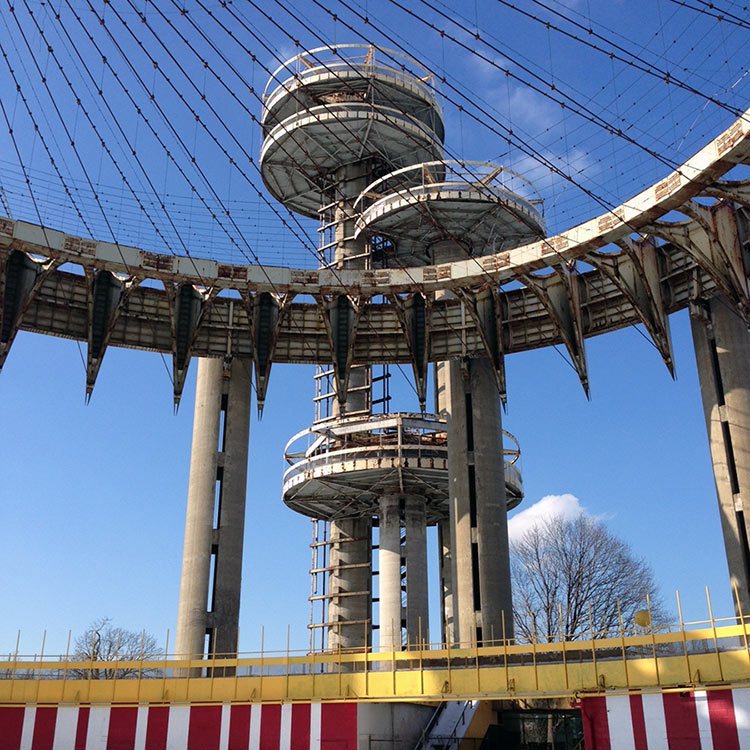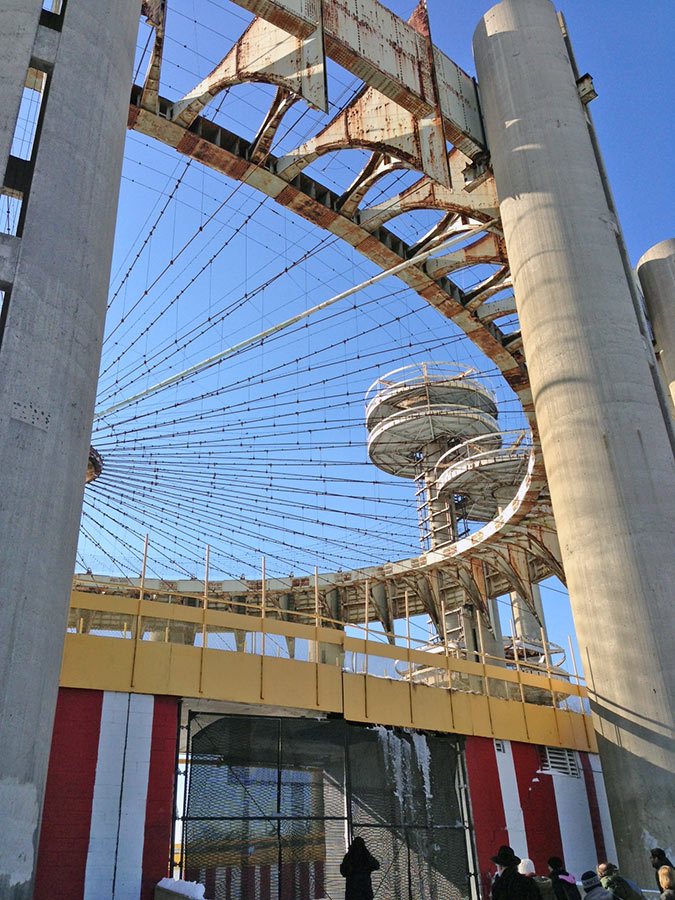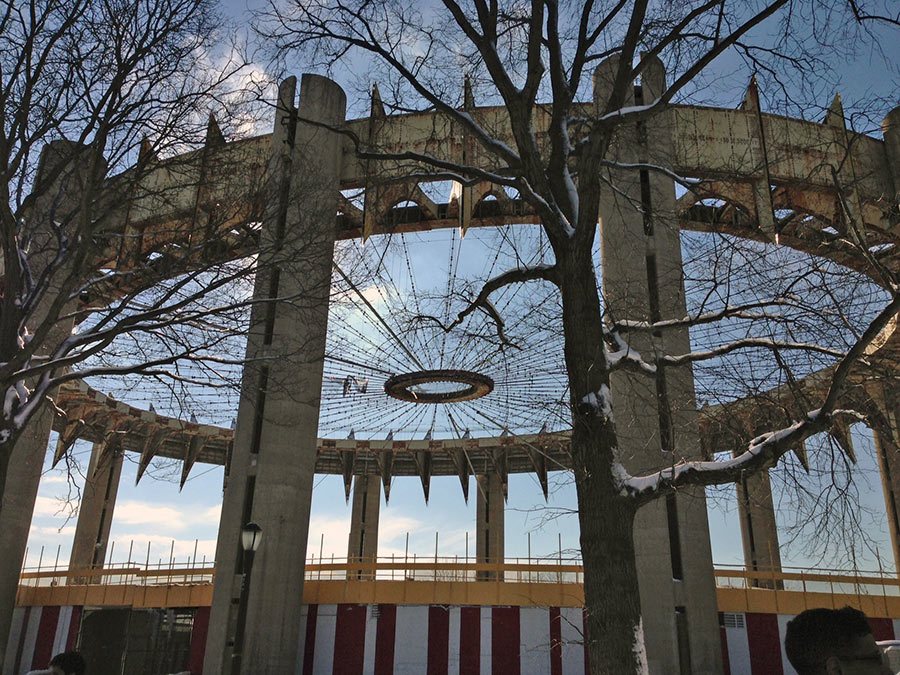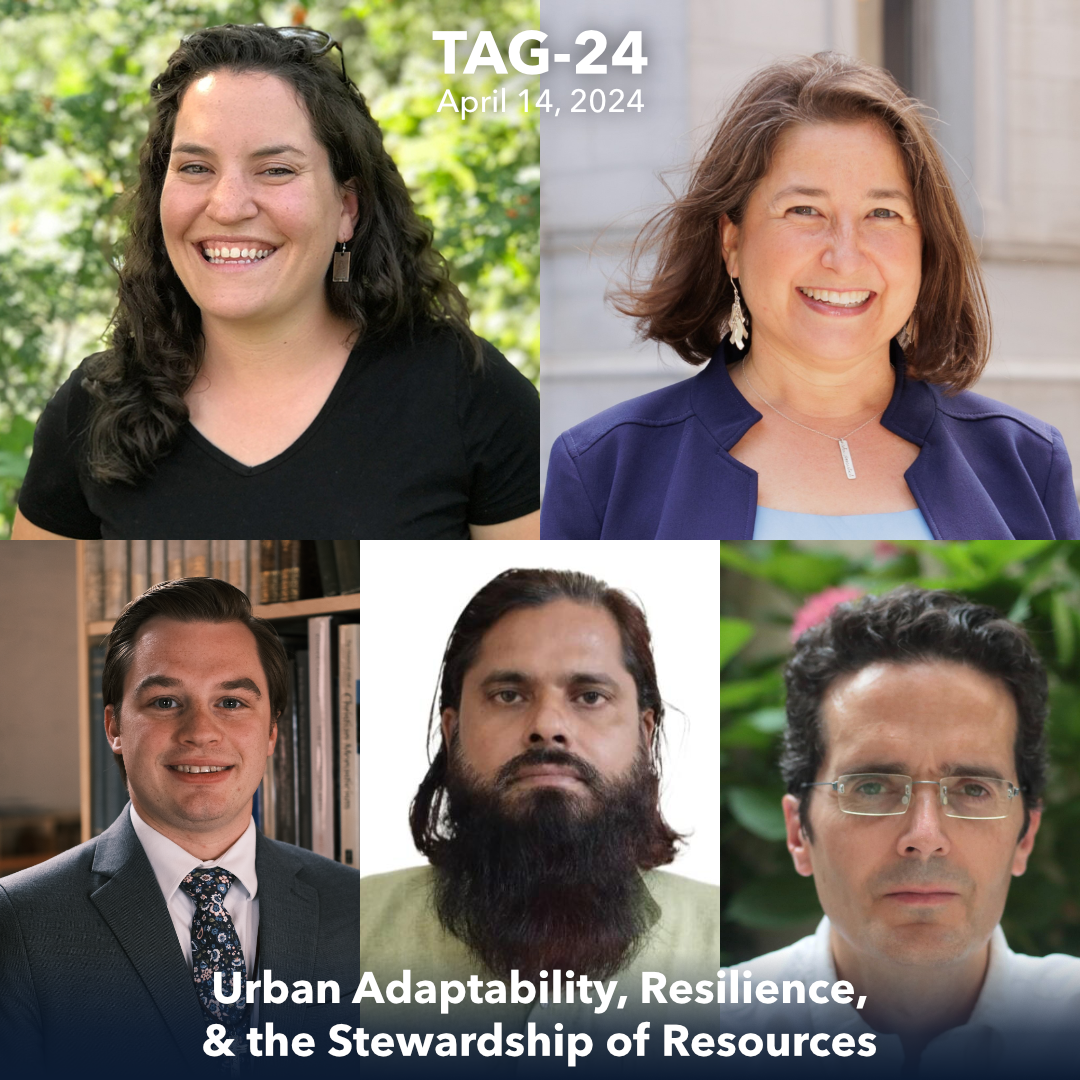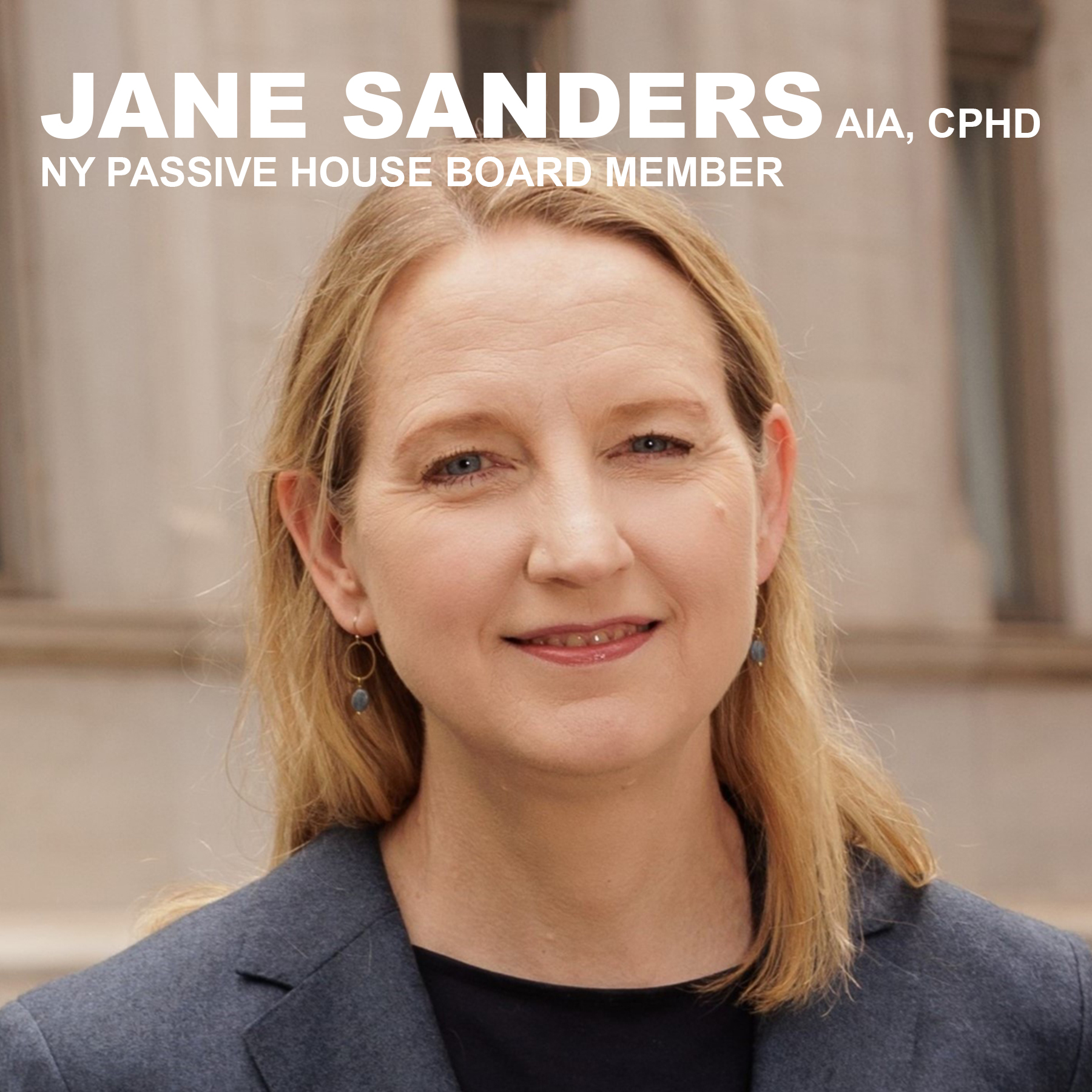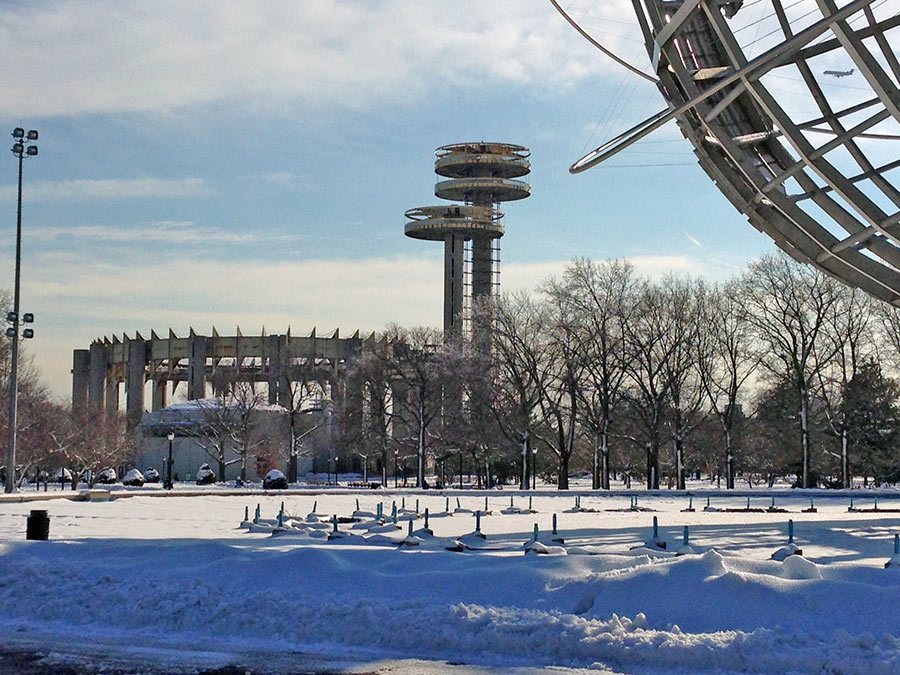
Queens Borough President striving to save Philip Johnson folly.
There is a conspicuous and almost haunting irony to what’s left of the 1964-65 World’s Fair in Queens’ Flushing Meadows-Corona Park. The Philip Johnson–designed New York State Pavilion, with its “Astro-View Observation Towers” and “Tent of Tomorrow,” was about more than showing off New York to the world. It was about looking into the future. But today, nearly 50 years after the fairgrounds opened its gates, it’s clear that “The Future” has not been kind to the pavilion. What remains standing in Flushing Meadows-Corona Park is a crumbling, gated-off relic. But things may be looking up for this rusty ruin.
In early February, Queens Borough President Melinda Katz led a walking-tour of the Pavilion to drum-up support for saving the structures. She was joined by elected officials, representatives from city agencies, and “People for the Pavilion”—an organization fighting to save the site.
The Tent of Tomorrow’s once-colorful roof is now a web of rusted cables. Much of the floor, which displayed an intricate map of New York State, has been eaten away by the elements. The metal on the adjacent Observation Towers is rusted and the concrete is chipped. Yet despite its current condition, the abandoned Pavilion retains its iconic stature and its space-age beauty.
According to a recent study by the NYC Parks Department, it would cost $14 million to knock it all down, roughly $52 million to return it to its World’s Fair conditions, and upwards of $70 million to give it new use.
The tour started in the Queens Theatre, an ideal spot to make the adaptive reuse case. The theater – first called “The Theaterama” – is original to the Pavilion; during the fair, it offered “360-degree panoramic film,” and works by Andy Warhol and Roy Lichtenstein hung on its facade.
Katz believes that 2014 offers a unique opportunity to save the Pavilion. “This is fifty years,” she said. “We need to do something about this. Otherwise, if we don’t do it now, what’s the impetus for accomplishing our goals?” While she doesn’t yet know “where the endgame is,” she’s urging people at federal, state, city and local levels to work together to find a way forward.
After so many decades of decay, there seems to be new momentum. The New York City Parks Department recently held listening meetings and posted an online survey to hear communities’ hopes for the Pavilion. And Katz has promised to start a task force to find options for the Pavilion’s future.
“I think we all know the right direction; the right direction is to preserve this, to save this for generations to come,” said Katz.” To make it a useful part of the park, and to make sure it doesn’t fall down on people around it.”

